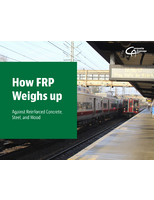ASTM Committee approves tomographic gamma scanner standard.
Press Release Summary:
ASTM Subcommittee C26.10 on Nondestructive Assay has developed ASTM C1718, Test Method for Nondestructive Assay of Radioactive Material by Tomographic Gamma Scanning. It will be used by facilities that generate radioactive waste and want to identify/quantify radionuclides in waste. Applicable to assay of waste streams with plutonium and uranium, as well as activation/fission products generated by nuclear power plants, standard will also be used by U.S. Department of Energy laboratories.
Original Press Release:
ASTM Nuclear Fuel Cycle Committee Approves New Tomographic Gamma Scanner Standard
W. CONSHOHOCKEN, Pa. - Invented in the early 1990s, the tomographic gamma scanner is used in the nondestructive assay of radioactive waste contained in drums or cans. In the last 10 years, TGS technology has been industrialized, with systems operating in South Korea, the United States and Europe.
A new ASTM International test provides users with a means of streamlining TGS procedures and practices, and it will be useful to auditors in ensuring that proper procedures are followed in performing waste assays. The new standard, ASTM C1718, Test Method for Nondestructive Assay of Radioactive Material by Tomographic Gamma Scanning, was developed by Subcommittee C26.10 on Nondestructive Assay, part of ASTM International Committee C26 on Nuclear Fuel Cycle.
According to Ram Venkataraman, director, applied research group, Canberra Industries, and chairman, C26.10, ASTM C1718 will be used by facilities that generate radioactive waste and want to identify and quantify the radionuclides in the waste. The standard is applicable to the assay of waste streams containing special nuclear materials such as plutonium and uranium, and activation products and fission products that are generated by nuclear power plants.
"Facilities that generate radioactive waste, such as Department of Energy laboratories in the United States and similar facilities in other countries, as well as nuclear power plants, will want to use this standard if they opt to employ a TGS system to perform waste assays," says Venkataraman.
Facility operators who use TGS systems and techniques are encouraged to participate in C26.10 activities to maintain and revise ASTM C1718.
"In the near future, C26.10 will be involved in writing a new guide on the subject of total measurements uncertainties in NDA techniques," says Venkataraman. "The subcommittee is soliciting help on the application of methodologies discussed in the ISO Guide to the Expression of Uncertainty in Measurements (ISO GUM). We would welcome input from statisticians and individuals that use ISO GUM methodology to determine uncertainty on measurement techniques that don't use representative standard and/or don't have the luxury of multiple measurements on a single item."
To purchase ASTM standards, visit www.astm.org and search by the standard designation number, or contact ASTM Customer Relations (phone: 610-832-9585; service@astm.org).
ASTM International is one of the largest international standards development and delivery systems in the world. ASTM International meets the World Trade Organization (WTO) principles for the development of international standards: coherence, consensus, development dimension, effectiveness, impartiality, openness, relevance and transparency. ASTM standards are accepted and used in research and development, product testing, quality systems and commercial transactions.
ASTM Committee C26 Next Meeting: June 6-10, June committee week, St. Louis, Mo.
Technical Contact: Ram Venkataraman, Canberra Industries, Meriden, Conn., Phone: 203-639-2514; rvenkataraman@canberra.com
ASTM Staff Contact: Joe Koury, Phone: 610-832-9804; jkoury@astm.org
ASTM PR Contact: Barbara Schindler, Phone: 610-832-9603; bschindl@astm.org




